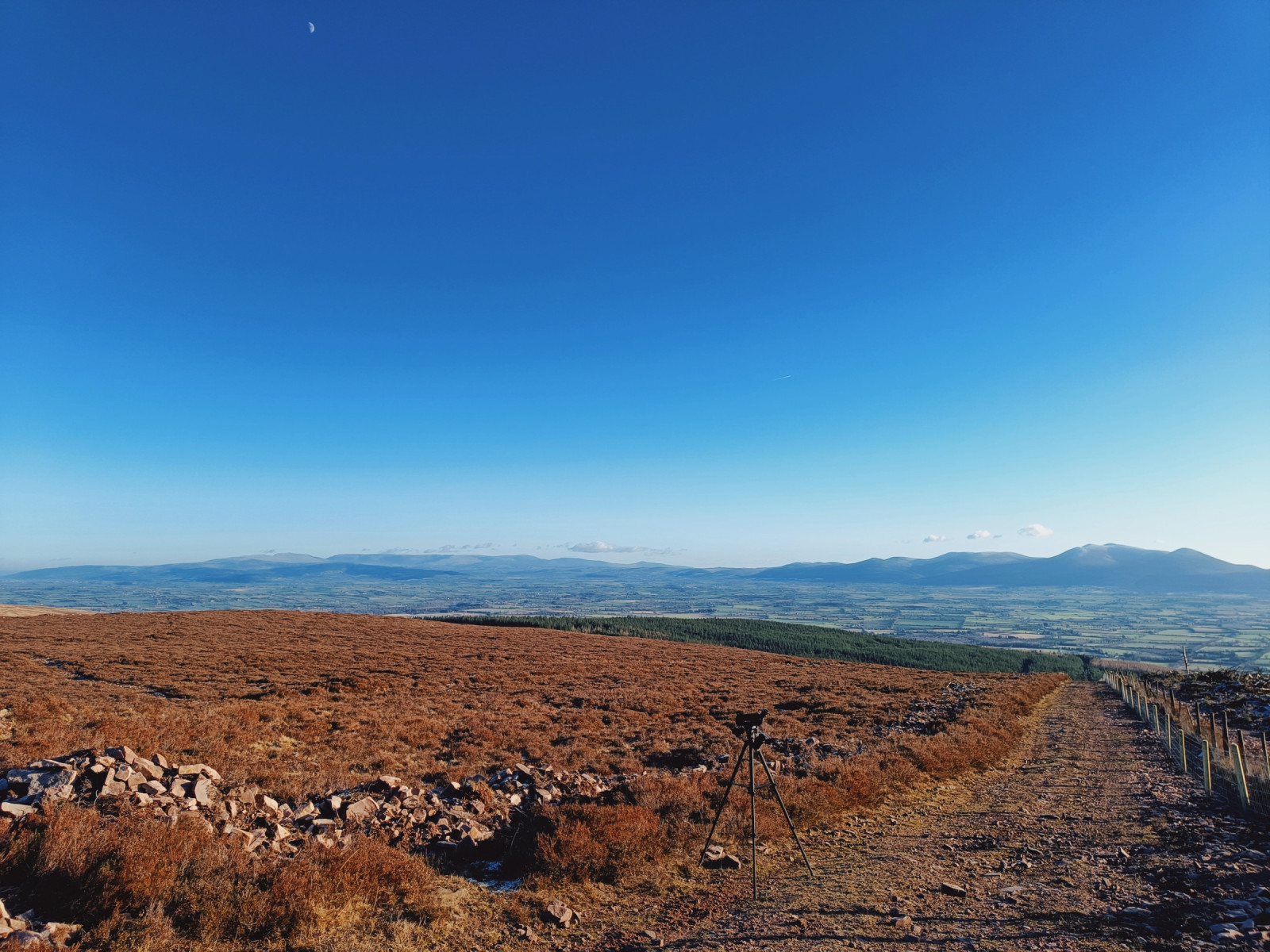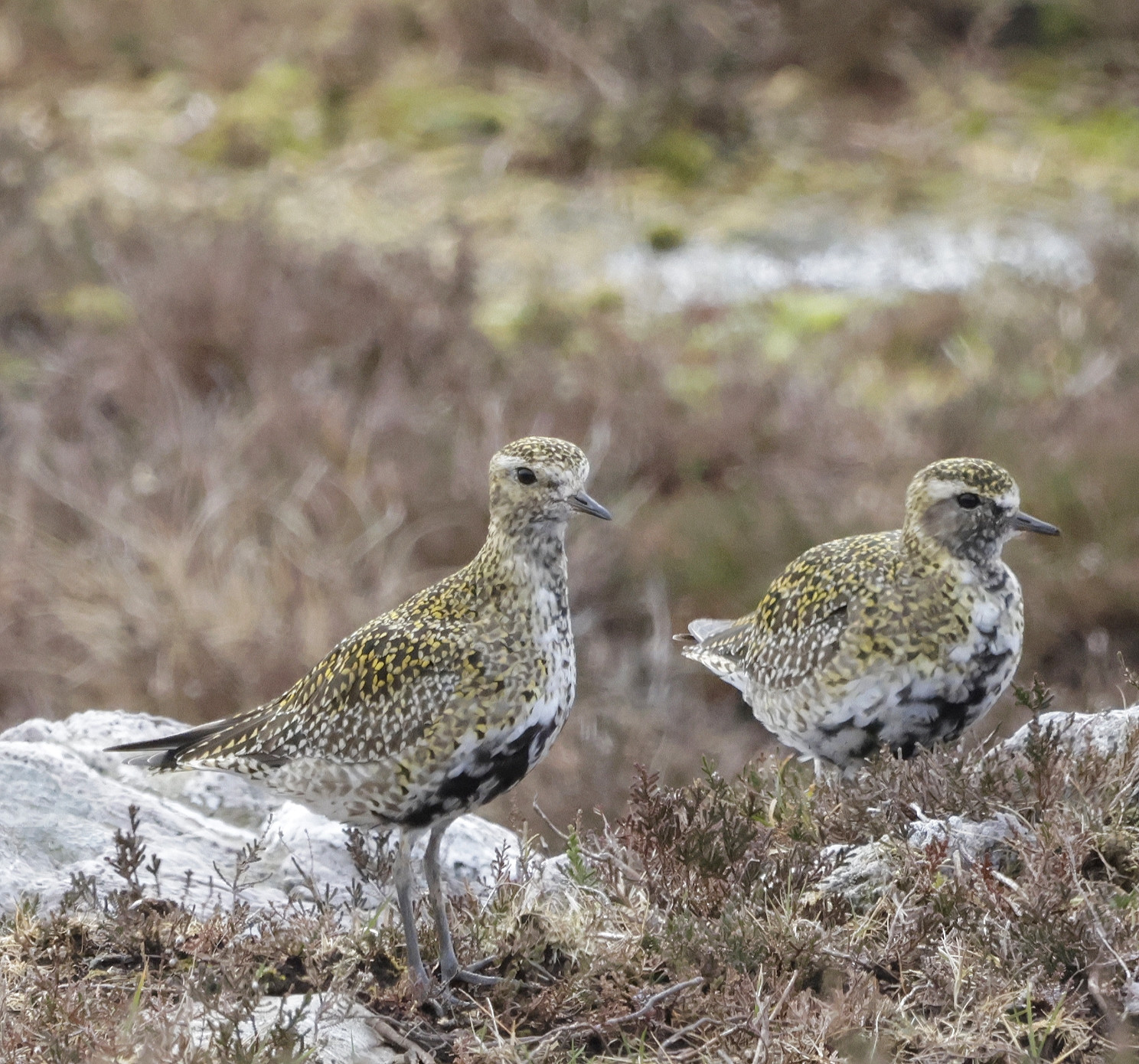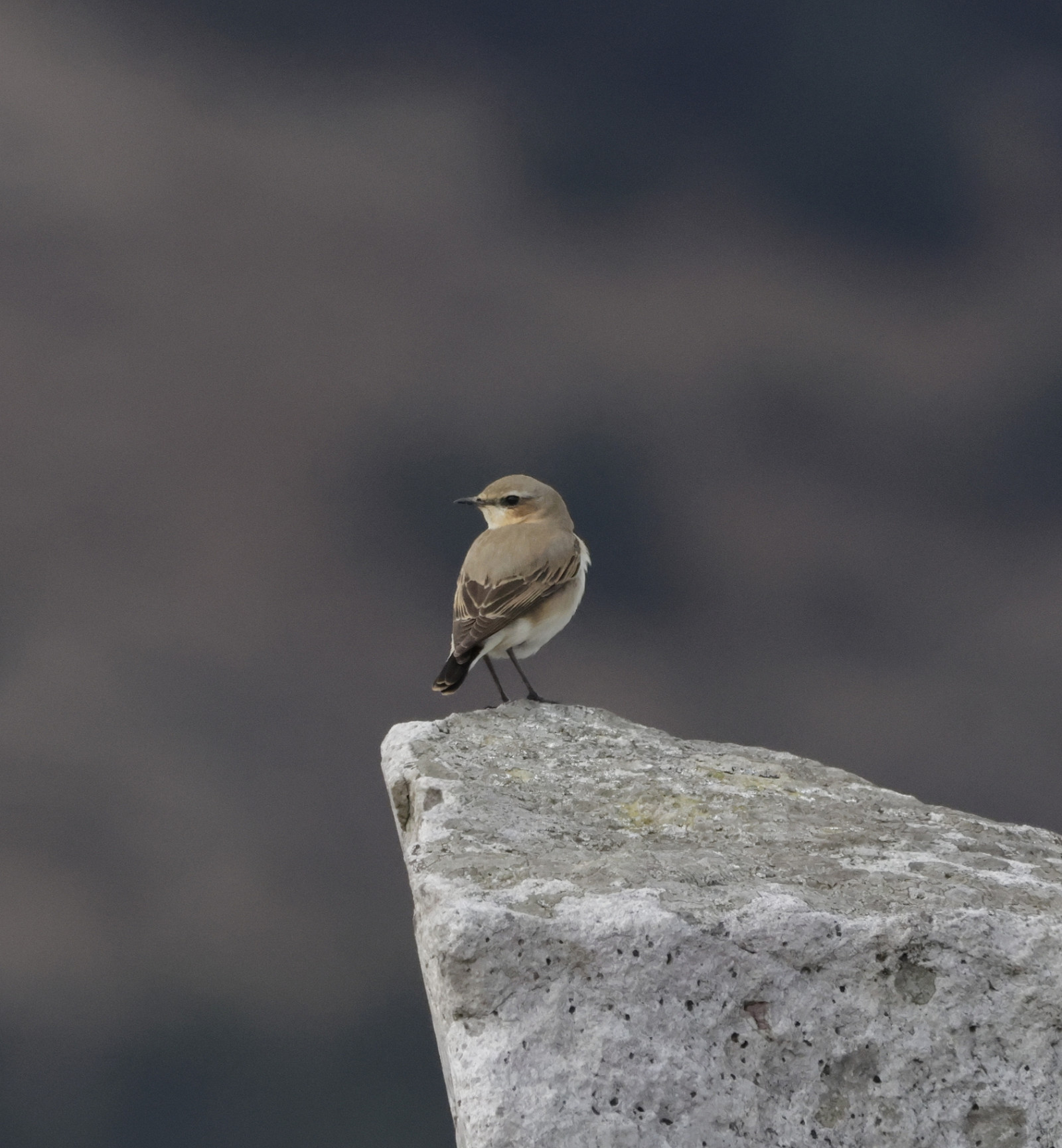Beschreibung
The Lower Galtee Mountains may not be as tall as nearby Galtybeg and Galtymore, but they offer a mix of habitats with a wider diversity of species presence throughout the year. At the car parks, there is a mix of decidious and coniferous woodland which is excellent for Waldbaumläufer, Eichelhäher and Fichtenkreuzschnabel. Buntspecht has also recently colonised the area.
Above the treeline, there is a mix of blanket bog and heather/moorland. Multiple raptor species can be encountered here, including Kornweihe, Merlin, Turmfalke and Wanderfalke, particularly in the winter and spring. The area of Tullanebone Mountain is probably the best area for these species. It is also the best area for seeing and hearing Schottischen Moorschneehuhn, particularly in February and March. March is arguably the best month for a hike in this area to see all these species and there is also a chance of encountering waders such as Goldregenpfeifer, Bekassine and Zwergschnepfe.
In the summer, Feldlerche, Wiesenpieper, Schwarzkehlchen, Steinschmätzer and Kuckuck can all be encountered. In the recently felled plantations and immature woodlands, Waldschnepfe can be seen roding at dusk and there is also a chance of seeing Ziegenmelker which has been recorded in the area on occasion.
Details
Zugang
There are multiple car parks (see map) and trail options available. The best option to see the most species is to hike to Tullanebone Mountain. Some of the trails are very steep and can be slippery especially in the winter so caution is advised. There are a number of gates on the trails, please remember to close them after you.
A car is the best option for getting to the area. Buses and a train run to the nearest town in Cahir. It is possble to cycle from the town if one has a mountain bike but be prepared for some steep climbing and poor trail conditions at times.
Terrain und Habitat
Wald , Vereinzelte Bäume und Büsche , Moor/Heideland , BergBedingungen
Hügelig , GebirgigRundweg
JaIst ein Spektiv nützlich?
NeinGute Beobachtungszeit
Winter , Sommer , FrühjahrBeste Beobachtungszeit
FrühjahrRoute
unbefestigte Straße , Schmaler PfadSchwierigkeitsgrad der Tour
Schwierig/anstrengendErreichbarkeit
zu Fuß , Fahrrad , AutoBeobachtungshütten oder -türme
NeinZusätzliche Informationen
Other than birds, it is easy to see Fallow Deer in the area. Irish Hare, Pine Marten and Red Fox can also be encountered. The general area is also very good for Schleiereule and one may encounter one early in the morning or late in the evening when travelling to and from the mountains.
Like any mountain, the weather can change drastically and it's important to prepare for all weather and check the forecast before going out.



